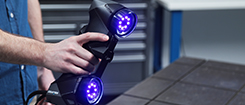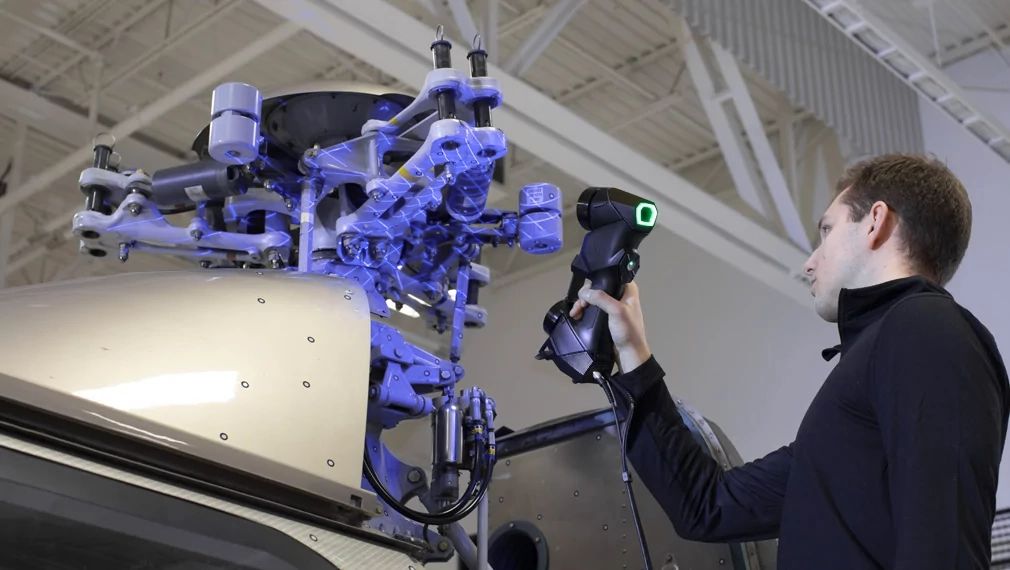July 24, 2024
Improving Vessel Integrity at a Refinery thanks to Advanced 3D Scanning Technology See the articleAs an asset owner, would you rather have three data you are 100% confident in or a thousand points you cannot trust? This question pertains to the integrity assessment of plants, refineries, or pipelines, where thickness loss measurements are collected every one to two years.
When asset owners lack trust in their data, they constantly face uncertainty. They are unaware if the corrosion mechanism is accelerating. They rely on predictive models incorporating aberrant data to make maintenance decisions and prioritize inspection schedules.
In risk-based inspection (RBI) and asset integrity management, aberrant data can skew risk assessments, leading to either overly optimistic or overly conservative evaluations of the risk posed by corrosion. This will result in unnecessary or inadequate maintenance of critical assets, which either increases costs or heightens the risk of equipment failure and accidents.
In the context of limited resources, not prioritizing the proper repairs of critical assets can have significant consequences, often referred to as the opportunity cost. Fires, explosions, and toxic releases, as well as fines, penalties, and legal liabilities, are all potential consequences of not allocating resources to the most critical repairs. Delaying critical repairs can also lead to more severe damage over time, resulting in higher long-term repair costs when assets become irreparable and require complete replacement.
Consequently, it is crucial for asset owners to prioritize the proper repairs of critical assets. To do so, they require accurate data and human-independent measurements that they can fully trust. If you are navigating the uncertainty of countless untrustworthy data points, then this blog is for you.
Complex Corrosion Mechanism
The rate of thickness loss due to corrosion can vary depending on several factors, including the material, the corrosive environment, and the presence of protective measures. In some cases, the corrosion rate can be constant over time, leading to linear thickness loss. However, in most cases, the corrosion rate accelerates over time, leading to exponential or non-linear thickness loss. This behavior often occurs in pitting corrosion, where the depth of pits can lead to faster corrosion rates1.
The actual corrosion kinetics is a complex mechanism that generally does not fit perfectly into linear or exponential models. Therefore, it is important to conduct regular inspections and use traceable techniques to accurately assess the corrosion rate and predict thickness loss over time.
1. A Review of Trends for Corrosion Loss and Pit Depth in Longer-Term Exposures
Advanced Predictive Maintenance
Asset integrity predictive models are used to forecast the breaking points of physical assets. These models leverage data trends, engineering principles, and statistical methods to predict when an asset might fail or require maintenance.
Based on these models, asset owners can prioritize maintenance based on corrosion rates. Basically, the steeper the slope, the higher the priority for repair. The slopes vary depending on the corrosion mechanism.
By accurately predicting breaking points, organizations can optimize maintenance schedules, reduce downtime, and improve safety.
Critical Thickness
The American Petroleum Institute (API) provides guidelines and standards for the inspection, maintenance, and repair of refinery equipment to ensure safe operation and prevent failures due to corrosion or other degradation mechanisms.
The concept of critical thickness or minimum required thickness (MRT) is an important aspect of these standards. It refers to the minimum thickness that a component must maintain to ensure its structural integrity and safe operation under the expected operating conditions, including pressure, temperature, and corrosive environment.
For example, API 510, which covers pressure vessel inspection, repair, alteration, and rerating, specifies the minimum thickness for pressure vessel components based on calculations that consider factors such as corrosion rates, design conditions, and material properties.
Similarly, API 570, which pertains to piping inspection, repair, alteration, and rerating, also specifies minimum thickness requirements for piping systems, considering factors such as design pressure, corrosion allowance, and material properties.
When the thickness reaches the API critical level or MRT, it is a clear signal that immediate action is required to maintain the safety, operational integrity, and compliance of the infrastructure.
Impact of Aberrant Data in Thickness Loss Calculation
Accurate data is crucial for calculating corrosion rate. The presence of an outlier among data points can significantly affect the slope of a curve fitted through these points, causing it to either increase or decrease depending on the outlier’s position. The outlier can skew the fitted curve away from the overall trend, distorting the data analysis and conclusions drawn from the curve.
Concretely, the inclusion of aberrant data can lead to incorrect calculations of thickness loss, resulting in either underestimation or overestimation of the actual material loss. This can skew the assessment of the component’s integrity. Underestimating thickness loss due to aberrant data can lead to a false sense of security, potentially allowing the component to operate under unsafe conditions. This increases the risk of failure, which can have severe safety implications. In parallel, overestimating thickness loss might result in unnecessary shutdowns, repairs, or replacements, leading to operational inefficiencies and increased costs. Overall, inaccurate thickness loss calculations can complicate maintenance and repair planning, making it difficult to prioritize actions and allocate resources effectively. Relying on aberrant data for thickness loss calculations can also lead to non-compliance with industry standards and regulatory requirements, resulting in penalties, fines, or legal issues. Finally, stakeholders, including operators, regulators, and insurers, may lose confidence in the integrity management program if aberrant data is not identified and addressed appropriately.
To mitigate these issues, it is crucial to use technology that generates reliable, accurate, and traceable data independent of human influence.
Trust in Accurate, Traceable, and Human-Independent Data
Creaform 3D scanners bundled with VXintegrity form the only technique available on the market that offers metrology-grade accuracy, traceable data over time, and human-independent results that eliminate measurement variations and doubt linked to aberrant data.
With Creaform, you can rest assured that the data acquired over the years is accurate, traceable, and independent of the technician’s skills, ensuring reliable damage evolution and analysis you can fully trust.
However, this cannot be said for pit gauges and other advanced techniques, such as phased array, radiography, and eddy current.
Accurate Data → Reliable Risk-Based Assessment Models
Measurements must be accurate and free from human error to maintain asset integrity over the long term, especially since the data is collected every 1-2 years. Over a span of 30 years, any inaccuracies can corrupt the database entirely, making it untrustworthy for maintenance and prioritization decisions.
Asset owners must start to have complete confidence in the data used to develop their predictive models. They must rely on accurate, traceable, and human-independent data sources to ensure the effectiveness and reliability of their models. Only then can they ensure that resources are allocated to the most critical needs, balancing short-term constraints with long-term operational and safety objectives, thus maintaining safety and preventing disasters.
Read more about Creaform NDT solutions and VXintegrity.














